CAMDEN COUNTY'S FIRST LUNATIC ASYLUM
The Evolution of Lakeland at Blackwood
By Sandy Levins ... | ...May 31, 2011
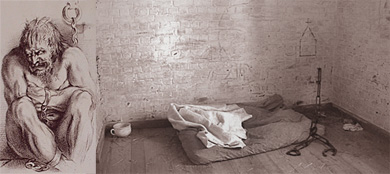
The treatment of mental illness in the 18th and 19th centuries was dramatically different from what it is today.
BLACKWOOD, N.J. -- Although Ancora, which opened in 1955 in Winslow Township, may be Camden County's best-known psychiatric hospital, it's not the first.
The first facility for the county's mentally ill was established in the late 1800s along the Timber Creek in Blackwood, at what became known as Lakeland. It was run according to concepts of treatment and mental illness that are shocking to most modern-day people.
Nineteenth-century society largely viewed the mentally ill with fear and annoyance and favored "putting them away" in asylums. Back then, it was then believed that among the many causes of lunacy were disappointed affection; loss of property; fatigue and excitement; domestic trouble; abuse; sudden death of a loved one; imprisonment of a relative; drink; intemperance; masturbation; overwork; long-continued womb trouble; an unhappy marriage; operation for hemorrhoids and suicidal menopause.
County poorhouseIn those days, the county poorhouse at Lakeland was the only place for those considered mentally deranged.

Photo: Camden Co. Historical Soc.
|
| One of the county's earliest facilities for the mental ill was this early 1800s building known as 'the mad house.'Larger |
Its first "inmate" was admitted in 1803. But a dozen years later, county freeholders realized there was sufficient need for a separate facility for the insane poor.
Initially, those unfortunates were housed in a two-story, wood-framed building partitioned into cells that was called "the mad house." In 1839 Dorothea Dix, a tireless advocate for more humane treatment of the mentally ill, described it as "populous with imbecile, insane and epileptic patients -- 25-30 individuals. [It] contains ranges of small cells altogether unfit for the individuals they house."
Squalid ravine cellsFirst-person accounts of the period describe some of the earliest Blackwood facilities as "barn-like" cells running along the ravine and fitted with small doors; one at the
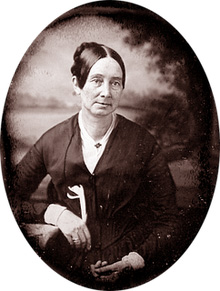
Photo: Camden Co. Historical Soc.
|
| Nineteenth-century reformer and pioneer for the rights of the insane, Dorothea Dix railed against conditions in Blackwood's 'mad house.' Larger |
top facilitated the passage of food to the inmate; the one at the bottom was used to clean out debris and replace straw bedding. It's easy to imagine how similiar these crude rooms were to animal pens in a stable. Though the poorhouse itself was enlarged by the county several times, the mad house and its ravine shacks remained the only option for the mentally ill for almost 40 years.
In 1878, freeholders approved construction of a "lunatic asylum" adjoining the poorhouse. The three-story brick structure, designed to house 90 patients would, according to the freeholders, provide "all the best modern appliances for the care of the insane."
Evolving psychiatric scienceThe most disturbed patients were housed in confinement cages on the ground floor; the second floor was for the less disturbed; and the third floor would house the asylum's steward
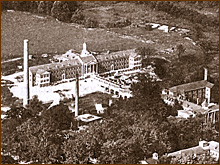
Photo: Camden Co. Historical Soc.
|
| Blackwood's facilities were repeatedly expanded and modernized in the 20th century into what became known as the Camden County Insane Hospital at Lakeland. It was torn down in the 1980s. Larger |
or matron and their families. This was at a time when the superintendent earned $800/year and the weekly cost to house a patient was $1.50. This new facility was known as the Camden County Insane Asylum at Blackwood.
Over the next 47 years, additions and improvements were made to the original brick structure until, by 1925, the asylum had grown to include a nurses' residence; an admission building where new patients were examined and observed; and a service bridge across the ravine connecting the old brick asylum to the new admission building. At the same time, Timber Creek was dammed, providing a scenic lake and giving the facility its new name: The Camden County Insane Hospital at Lakeland.
Strange early treatments
Along with improvements to the physical structures that housed them, care for the mentally ill gradually began to shift from strictly custodial to therapeutic, with treatments running the gamut from the simply bizarre to the truly horrific.
For instance, in the late 18th century, Philadelphia's Dr. Benjamin Rush, -- considered the founding father of American psychiatry
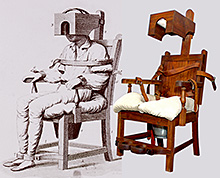
Photo: Hoag Levins
|
| Dr. Benjamin Rush's 'Tranquilizer' chair. Larger |
-- invented two curious "therapeutic" devices. His "Tranquilizer" chair was designed to, in Dr. Rush's words, "keep maniacs in the inflammatory stage of their disease perpendicular... so as to save the head from the impetus of the blood as much as possible." The second, called the "Gyrator," placed the patient on a board, head outward like a spoke on a wheel, then rotated the board at high speed, sending blood racing to the head to supposedly relieve a congested brain. At the other end of the spectrum were electroconvulsive therapy -- shock therapy -- that delivered a series of
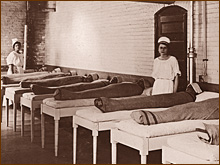
Photo: National Archives
|
| Typical of the 19th- and early 20-century treatments for insanity that now seem unscientific or even bizarre was the wrapping of patients in wet sheets. They were then laid out in neat rows. Larger |
electric shocks across the head to produce convulsions designed to improve the symptoms of schizophrenia, and the barbaric lobotomy, which severed the fibers connecting the frontal lobes from the rest of the brain -- sometimes using tools as crude as an ice pick and a hammer. Modern-day therapiesEventually, more modern facilities like Lakeland and the new Ancora began to add counseling, as well as occupational, recreational, industrial and physical therapy, to their treatment programs at about the same time a new class of drugs -- the antipsychotics -- hit the market. By the mid-1950s, with 560,000 Americans hospitalized for various forms of mental illness, Thorazine had become so popular manufacturers couldn't keep up with demands. From then on, psychotropic agents with names literally
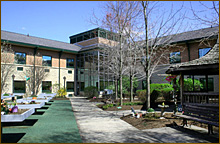
Photo: CCHSC
|
| Today, the new Camden County Health Services Center at Lakeland and Ancora Psychiatric Hospital in Hammonton provide psychiatric services for county residents. Larger |
ranging from A to Z -- Abilify and Antabuse to Zolof and Zyprexa -- soon became standard treatments in modern psychiatry.
Despite the undeniable strides both hospitals had made in treating the mentally ill, Ancora wasn't the only one to take its licks in the press. From the 1960s through the 1980s, Lakeland was rocked by charges of inefficient operations, the ups and downs of political uncertainties and negative community perceptions. By 1998 the decision was made to consolidate county operations into a single, modern facility occupying 226,000 square feet. Today that sprawling complex at Lakeland is known as the Camden County Health Services Center, part of which is a modern, 158-bed Behavioral Health facility that, along with Ancora Psychiatric Hospital, provides state-of-the-art psychiatric care for the residents of Camden County.
Sandy Levins is the President of the Camden County Historical Society and proprietor of HistoricFauxFoods.com, a company that makes historically accurate fake foods for historic homes and museums.
© 2011, HistoricCamdenCounty.com, All Rights Reserved
Contact: editor@HistoricCamdenCounty.com
About this Web site
| 


